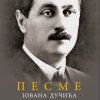While a postdoctoral researcher with the Max-Planck Institute for Quantum Optics in Garching, Germany, Professor Vuletić accepted a Lynen Fellowship at Stanford University in 1997. In 2000, he was appointed an Assistant Professor in the Department of Physics at Stanford and in June 2003 accepted an Assistant Professorship in Physics at MIT. He was promoted to Associate Professor in July 2004. He was promoted to Full Professor in July 2011.
.Recent awards include a 2003–04 Alfred P. Sloan Research Fellowship and a 2012 Fellowship of the APS.
Professor Vuletic’s interests lie in many-body quantum mechanics and the experimental implementation of entangled many-body states. He is particularly interested in entangled states that can be used to overcome the so-called standard quantum limit in measurements, a limit that is associated with quantum mechanical measurements on collections of independent particles. His group concentrates on the light-atom interaction as a tool to generate non-classical states of atomic ensembles and of light. Recently, his group has demonstrated spin squeezing, a method to redistribute the quantum noise in atomic ensembles so as to improve the precision of an atomic clock beyond the standard quantum limit. His group has also demonstrated several techniques to induce strong interactions between individual photons. Among them are vacuum-induced transparency, a technique where the vacuum field inside an optical resonator renders an absorbing material transparent, and a strongly nonlinear medium that will transmit one photon but absorb two.
Source: MIT
Srpski naučnik na korak do izuma kvantnog računara
Kvantni kompjuter koji bi mogao da uradi u sekundi ono za šta bi klasičnom računaru trebalo 1000 godina, neostvareni je san srpske nauke. Ipak, šestoro svetskih stručnjaka, među kojima je i jedan Srbin, prof. dr Vladan Vuletić, na pragu su da to učine.
Vladan Vuletić, srpski naučnik sa Instituta tehnologije u Masačusetsu (MIT), u šestočlanom timu koji čine istraživači iz Kine, Amerike, Rusije, Japana i Austrije, otkrio je optički tranzistor i time se više nego iko do sada približio izumu kvatnog računara.
- Običan tranzistor je sprava gde jedna mala struja, ili mali broj elektrona koji čine struju kada se kreću, kontroliše jednu veću struju. Takve električne tranzistore možete naći svuda – u svakoj električnoj spravi, u svakom kompjuteru. Naučnici su dugo razmišljali da li je moguće napraviti i optičke tranzistore, gde bi jedan slabiji izvor svetlosti ili čak jedan jedini foton, kako se zovu čestice koje čine svetlo, mogao da kontroliše jedno jače svetlo ili laserski zrak. Takvi optički tranzistori bi mogli da budu znantno brži od običnih električnih tranzistora i da troše manje energije - objašnjava za “Blic” prof. dr Vladan Vuletić.
On i njegov tim uspeli su u toj nameri i napravili takav optički tarnzistor gde samo jedan jedini foton (čestioca svetlosti) može da uključi ili isključi laserski zrak. O ovom otkriću ubrzo su počeli da izveštavaju mediji iz svih krajeva sveta i da bruje stručnjaci u svetskim naučnim krugovima, jer je postojalo jasno da se srpski naučnik približio onome što već decenijama unazad mnogima nije uspelo ni posle brojnih pokušaja. Ukratko rečeno - nikad nismo bili bliže realizovanju kvatnog računara koji i dalje spada u domen naučne fantastike.
- Da bi se tranzistor koji smo otkrili upotrebio u kvantnom kompjuteru, biće potrebno da se sistem minijutarizuje i ujednostavi. Naš tranzistor koristi hladne atome koji se nalaze na -273 celzijusa, blizu apsolutnoj nuli. Takvi atomi se kreću tako sporo da nisu brži od mrava - kaže Vuletić.
Na projektu su, dodaje on, radili oko godinu dana. Bilo je neizvesno sve do samog kraja, ali nisu odustajali.
- Istraživanja obično počinju nekom idejom iz kvantne mehanike koja izgleda obećavajuća na papiru, a da li će funkcionisati u eksperimentu gde uslovi nisu idealni, obično se ne zna dok se ne pokuša. Ovog puta je funkcionisalo. Niko ne zna da li će ikad biti moguće realizovati kvantni kompjuter. Poznati fizičar Ervin Šredinger je jednom opisao mačku koja po kvantnoj mehanici može da istovremeno bude i živa i mrtva. Kvantni kompjuter nije tako kompleksan sistem kao mačka, ali možda nije moguće sagraditi tako veliku mašinu koja funcioniše po pravilima kvantne, a ne klasične mehanike. Ali čak ako nije moguće realizovati u praksi kvantni kompjuter, u svakom slučaju naučićemo dosta o kvantnoj mehanici i o prirodi u tom pokušaju - zaključuje naš naučnik.
Učio od dva Nobelovca
Vladan Vuletić diplomirao je i doktorirao u Minhenu u Nemačkoj, kod prof. Teodora Henša koji je kasnije (2003. godine) dobio Nobelovu nagradu za fiziku. I to nije jedini Nobelovac od koga je učio. U Kaliforniji, na Univerzitetu Stenford, radio je sa Stivenom Čuom koji je dobio Nobelovu nagradu za fiziku 1997. godine. Vuletić je 2000. dobio profesuru na Stenfordu i MIT-u, a 2003. godine je prešao na MIT. Iz Srbije je otišao kao dete sa četiri godine, odrastao je u Nemačkoj, ali redovno putuje u Srbiju, odakle mu je i žena.
- Pokušavam i da održavam saradnju sa naučnicima iz Srbije, posebno sa Instituta za fiziku u Beogradu, i nekoliko studenata i naučnika iz Srbije su radili sa nama na raznim projektima na MIT-u - kaže on.
Miljana Leskovac, 31. juli 2013.
Izvor: Blic





